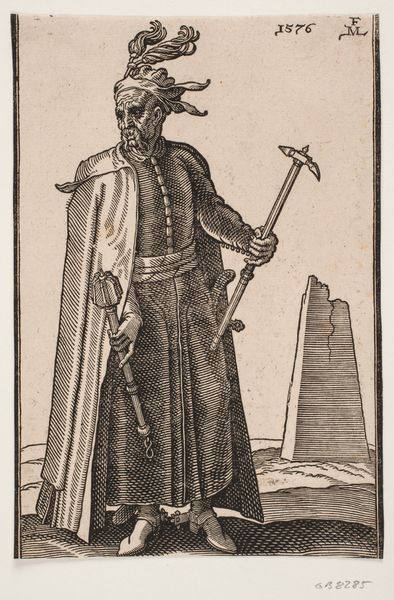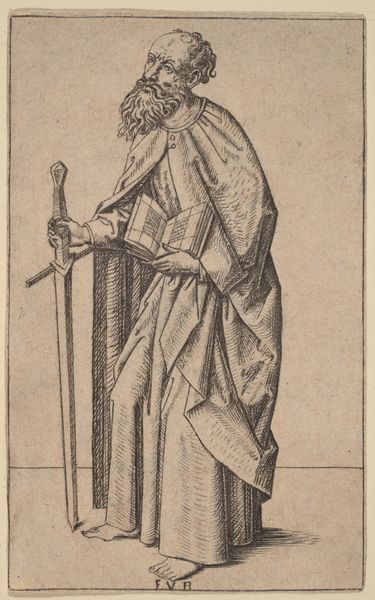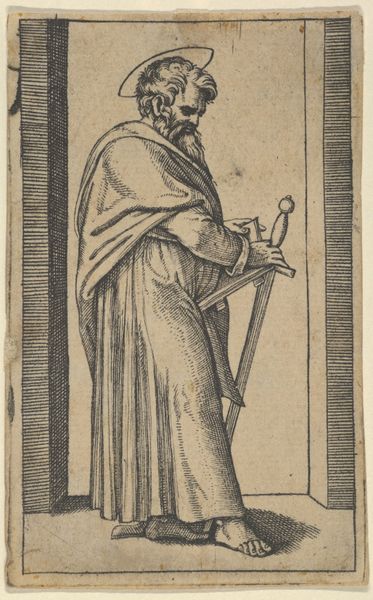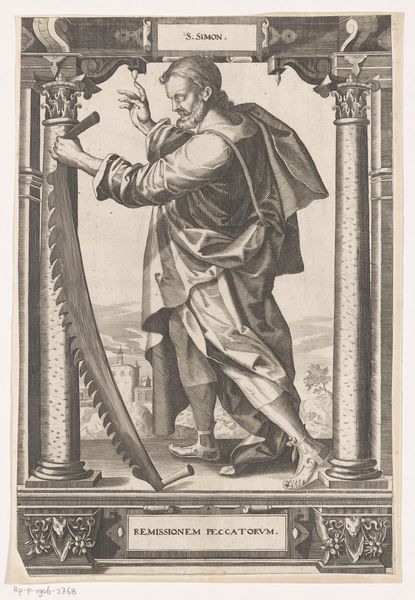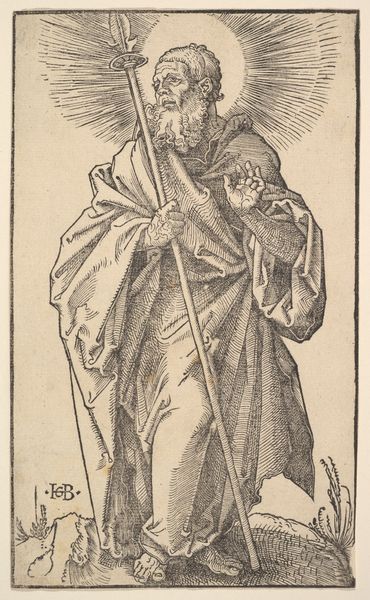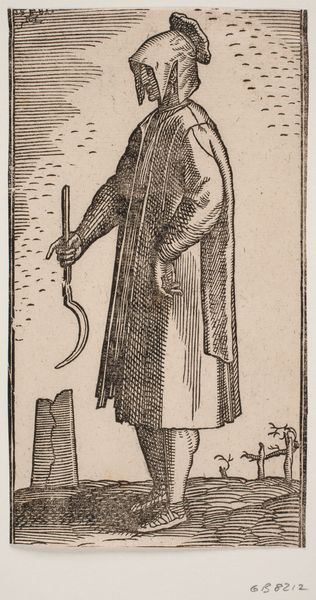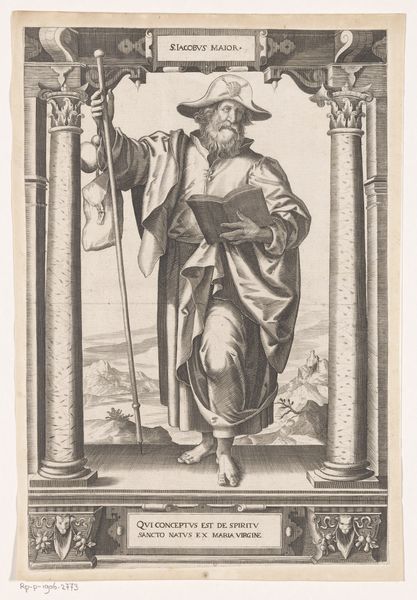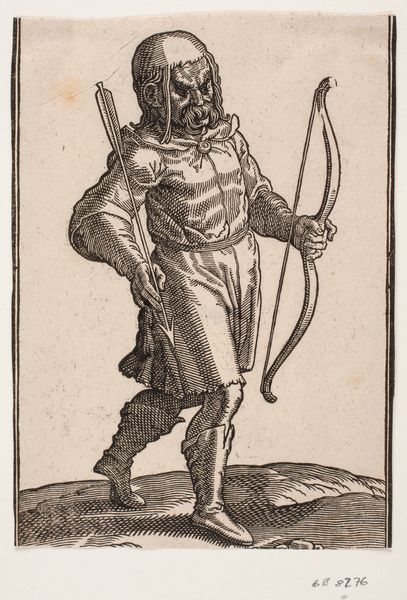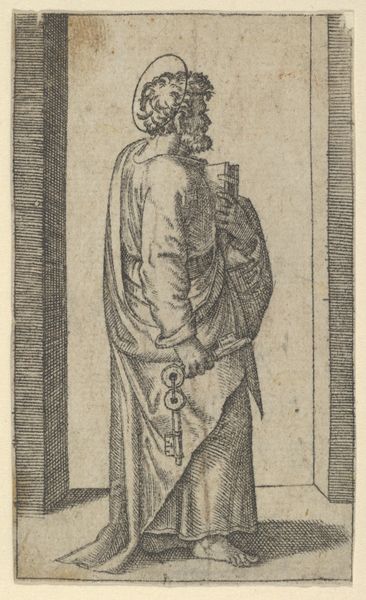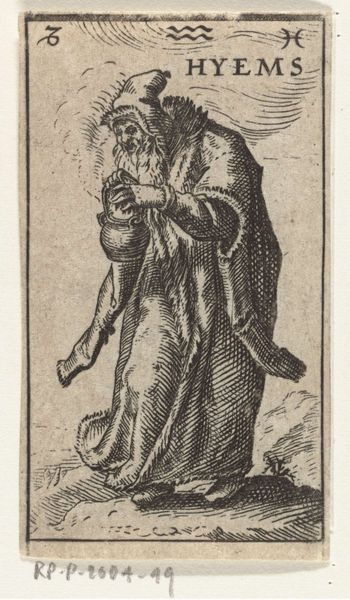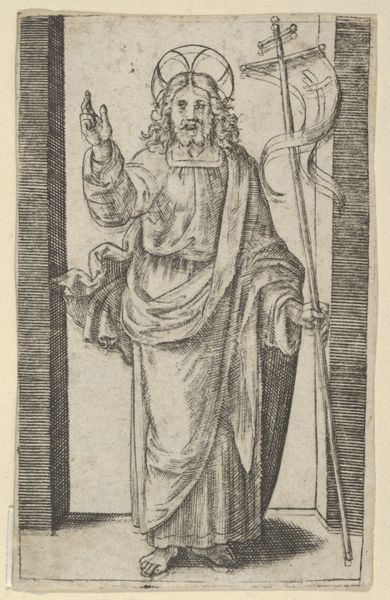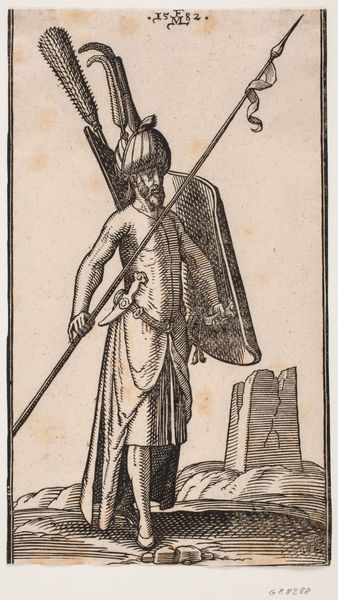
Stående soldat, frontalt set, hovedet vendt mod v.; han bærer pelsbræmmet hat, hans hår hænger ned i to fletninger; i h. hånd en pil, i v. hånd en bue og et sværd hænger ved hans v. side 1576
0:00
0:00
print, woodcut
#
light pencil work
# print
#
pen sketch
#
pencil sketch
#
personal sketchbook
#
sketchwork
#
ink drawing experimentation
#
pen-ink sketch
#
woodcut
#
sketchbook drawing
#
sketchbook art
#
fantasy sketch
Dimensions: 197 mm (height) x 132 mm (width) (bladmaal)
Curator: Welcome. Today we are looking at a work entitled "Standing Soldier, Seen Frontally, Head Turned to the Left; He Wears a Fur-trimmed Hat, His Hair Hangs Down in Two Braids; In His Right Hand an Arrow, in His Left Hand a Bow, and a Sword Hangs at His Left Side" by Melchior Lorck, dating to 1576. It is currently held at the SMK - National Gallery of Denmark. Editor: What strikes me immediately is the sharp, almost graphic quality. The fine lines creating texture and detail give the figure a compelling presence. It’s remarkable how much detail Lorck achieves with just line work. Curator: Absolutely. Lorck, a Danish artist active in the 16th century, was a key figure in transmitting Ottoman culture to Europe through his extensive travels and depictions of people and customs. This woodcut is particularly valuable as a visual record of the diverse figures within the Ottoman Empire, reflecting the complex relationship between Europe and the Ottoman world at that time. Editor: There's an interesting tension in the composition between the almost comical detailing of his attire – especially the hat and braids – and the serious tools of war he carries. The texture almost feels… layered? The background is distinct, and there's an implied weight. Curator: Exactly. Consider the strategic placement of his weaponry – the arrow in his right hand, the bow and sword at his side. These choices served to convey messages about military readiness and power dynamics in Ottoman society and Europe at the time. Furthermore, prints were critical means of disseminating information. So its distribution shaped European perceptions of the Ottoman Empire and, conversely, of Europe itself. Editor: I find myself wondering about the absence of shadow, negative space and its effects. It directs my eye straight to the intricate layering on the main figure and his adornments and the level of detail suggests precision. What appears ornamental here—the fur, braids, buttoned shirt and adornments—becomes representative of power, especially in his facial expression, stern even within the minimal detail of the print. Curator: His garments offer glimpses into trade routes and diplomatic relations of the period. This soldier figure becomes more than just a person; he’s a signifier of broader social, political, and economic connections of the 16th century. Editor: Looking at how the artist uses the medium of the woodcut to portray texture and dimension... it shows us how detail in rendering fabric can almost turn the wearer into a symbol of material power and societal importance. It really exemplifies how much narrative can be created within visual form, just within stark ink lines. Curator: Indeed, considering its history helps us see how an artwork, especially one reproduced as a print, had the power to shape perceptions, impact policies, and facilitate cultural exchanges across early modern Europe and the Ottoman world. Editor: I appreciate the nuances that become apparent with each viewing, which shows me how technique can tell just as rich a story.
Comments
No comments
Be the first to comment and join the conversation on the ultimate creative platform.

